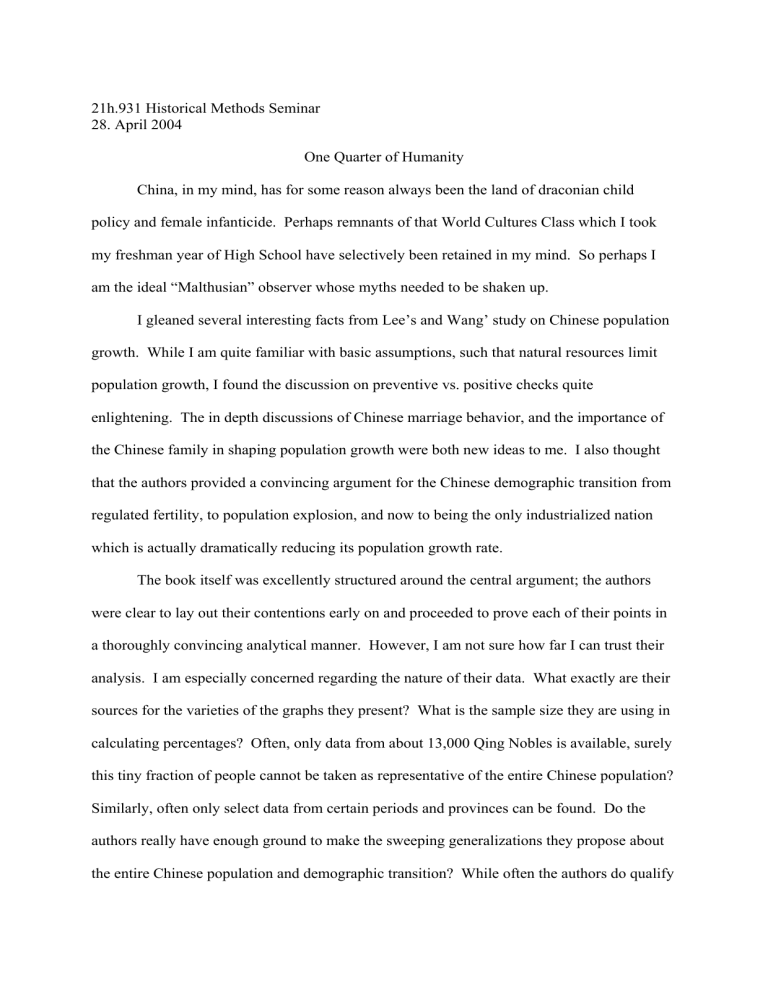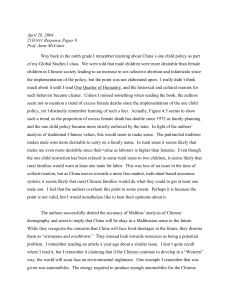21h.931 Historical Methods Seminar 28. April 2004 One Quarter of Humanity

21h.931 Historical Methods Seminar
28. April 2004
One Quarter of Humanity
China, in my mind, has for some reason always been the land of draconian child policy and female infanticide. Perhaps remnants of that World Cultures Class which I took my freshman year of High School have selectively been retained in my mind. So perhaps I am the ideal “Malthusian” observer whose myths needed to be shaken up.
I gleaned several interesting facts from Lee’s and Wang’ study on Chinese population growth. While I am quite familiar with basic assumptions, such that natural resources limit population growth, I found the discussion on preventive vs. positive checks quite enlightening. The in depth discussions of Chinese marriage behavior, and the importance of the Chinese family in shaping population growth were both new ideas to me. I also thought that the authors provided a convincing argument for the Chinese demographic transition from regulated fertility, to population explosion, and now to being the only industrialized nation which is actually dramatically reducing its population growth rate.
The book itself was excellently structured around the central argument; the authors were clear to lay out their contentions early on and proceeded to prove each of their points in a thoroughly convincing analytical manner. However, I am not sure how far I can trust their analysis. I am especially concerned regarding the nature of their data. What exactly are their sources for the varieties of the graphs they present? What is the sample size they are using in calculating percentages? Often, only data from about 13,000 Qing Nobles is available, surely this tiny fraction of people cannot be taken as representative of the entire Chinese population?
Similarly, often only select data from certain periods and provinces can be found. Do the authors really have enough ground to make the sweeping generalizations they propose about the entire Chinese population and demographic transition? While often the authors do qualify
their conclusions to be applied only to certain geographic regions and social classes, their final conclusions are applied universally to China. Is this justifiable?







